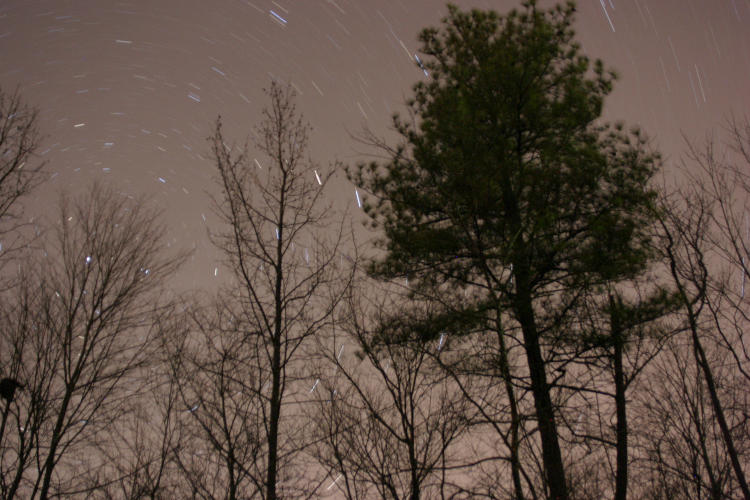As further evidence of my poor planning about this time a year ago, the normal weekly entry for the ‘On This Date’ posts would be tomorrow, but as I look at my spreadsheet for December 30th I find that (as far as my annotated, digital images go anyway,) I’ve shot nothing. Not a sausage. Hell of a finalé, eh? Ah, well – see you next year.
Nah, I can’t let it go at that. I did have some photos for both the 29th and 31st, so we’re going to double-down here at the end of the year and have two ‘On This Date’ posts this week. Call it your christmas bonus for a productive year, or something. Call it whatever you like – who’s gonna stop you?
So, going back to 2006, we have – well, only one that I’ll post, because I shot three all told, and two of them are detail photos of the underside of barnacles. I don’t think you can handle that much excitement, so we’ll use the other.

Curious to see how well digital handled long night exposures, I set up a borrowed Canon 10D in my adjoining woods and fired off a 15 minute exposure, aimed north – I knew I couldn’t locate Polaris through the trees but aimed in the general direction with a wide angle lens, and I believe I may have still snagged it anyway. The star arcs will describe a circle around Polaris (or would, if you could let the exposure go for 24 hours and, like, not have the sun come up,) so they’ll kind of indicate where it would be, and while it would be easy to believe that it’s that brightest spot buried in the tree to the left, that’s not quite in the right location. Plus that seems to be a little elongated itself from tracing its own partial circle. No, it looks like Polaris may be that very faint star directly to the right of the bright one, partially hidden within the branches (because it should be fairly bright in this exposure.) Regardless, the test told me a few things, including how digital sensors register light pollution (better than Provia film, by a wide margin,) and how distinctly they register star colors (worse than Provia.)
I recalled a post talking about doing a long exposure on the Mamiya medium format camera (thus film, and likely Provia at that,) and I do have a scan of such a photo – but then I remembered that I hadn’t even started the blog by this date, so that post and the subsequent MF exposure is referring to a different date – this one, actually. I suppose I could have posted it for the ‘On This Date’ post back in January, but no, that fell on the 29th too.
Oh, hell – it’s already scanned, so here it is. Just don’t count it as on this date, y’hear?

I’d have to go back and see if all the dust was on the slide itself (thus within the camera lens) or an artifact of scanning, which I consider more likely because this was done with a flatbed scanner with medium format capability. This is Fuji Provia F, better than the digital but still not ideal, though that may be due to the conditions and light pollution more than anything else; that orange glow on the tree is due to the neighbor’s porch light. My goals to do some of these long exposures while at the Outer Banks (the darkest spot within about 300 kilometers) still haven’t come to fruition, thought I did try.




















































